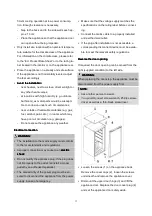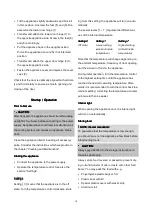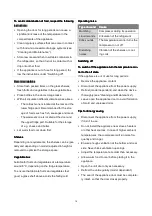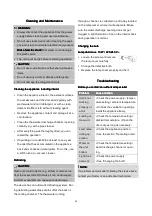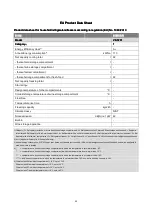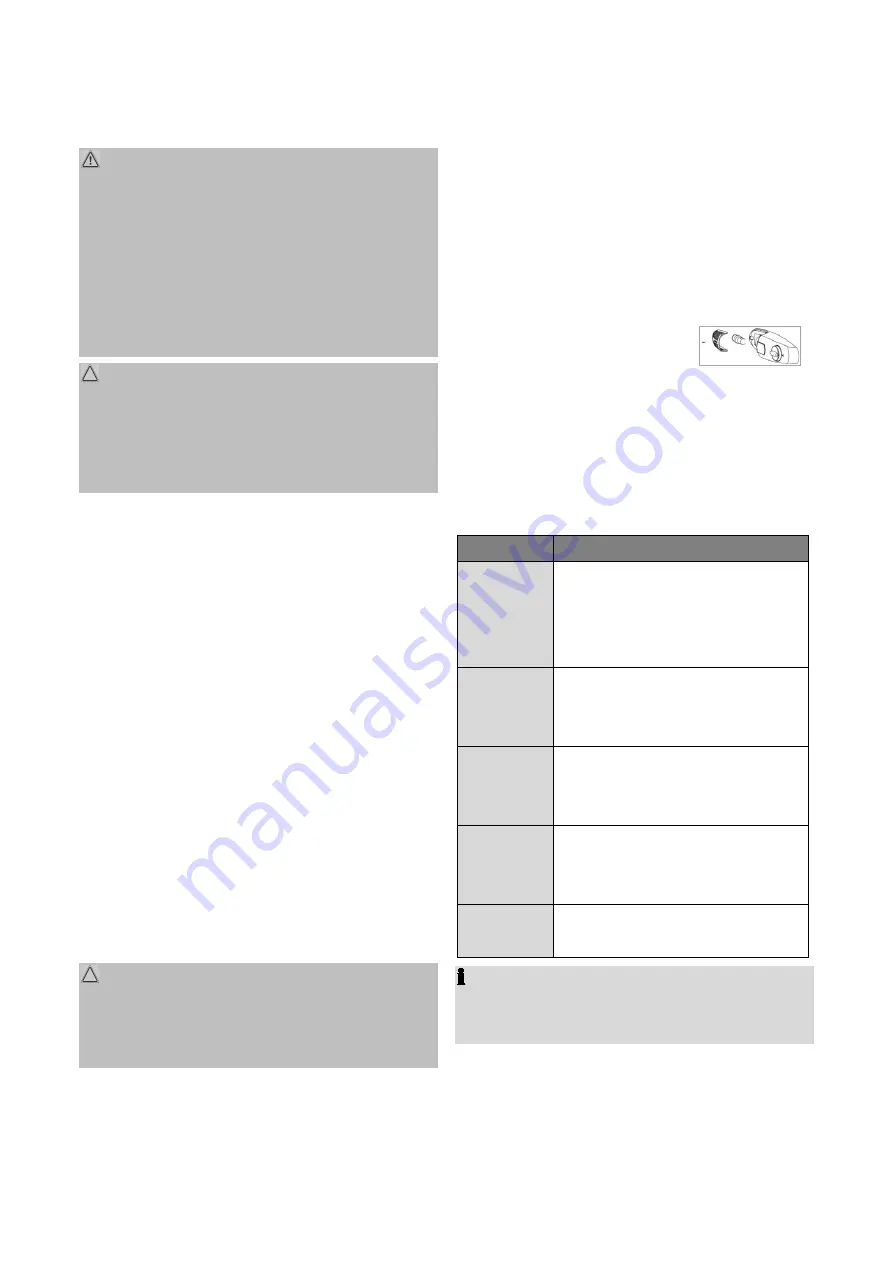
20
Cleaning and Maintenance
Cleaning and Maintenance
Cleaning and Maintenance
Cleaning and Maintenance
WARNING:
WARNING:
WARNING:
WARNING:
•
Always disconnect the appliance from the power
supply before cleaning and user maintenance.
•
Do not use steam cleaners for cleaning the appli-
ance; moisture could enter electrical components.
Risk of electric shock!
Risk of electric shock!
Risk of electric shock!
Risk of electric shock! Hot steam could damage
the plastic parts.
•
The unit must be dry before restarting operation.
CAUTION:
CAUTION:
CAUTION:
CAUTION:
•
Do not use a wire brush or other sharp, abrasive
items.
•
Do not use any acidic or abrasive detergents.
•
Do not damage the refrigerant circuit.
Cleaning the appliance including interior
Cleaning the appliance including interior
Cleaning the appliance including interior
Cleaning the appliance including interior
•
Clean the appliance interior, the exterior surfaces,
the accessories and the door seal regularly with
warm water and mild detergent; or with a clean,
damp microfiber cloth without cleaning agent.
•
Remove the appliance content and storage it at a
cool location.
•
Clean the thaw water discharge channel / opening
carefully e.g. with a pipe cleaner.
•
After everything was thoroughly dried, you can
restart the operation.
•
Depending on model:
Wipe at least once a year
the dust that has accumulated on the appliance
back and condenser (metal grille). To do this, use
a soft brush or a vacuum cleaner.
Defrosting
Defrosting
Defrosting
Defrosting
CAUTION:
CAUTION:
CAUTION:
CAUTION:
Never use metal objects (e.g. knifes) to remove ice
from the evaporator. Otherwise it can be damaged.
A defect evaporator can cause serious damage.
The device has an automatic defrosting system. Dur-
ing defrosting water drops drains off at the back of
the cooling chamber. The thaw water running
through a channel, is collected in a drip tray located
on the compressor, where it will evaporate. Make
sure the water discharge opening does not get
clogged. A light formation of ice on the interior back
during operation is normal.
Changing the bulb
Changing the bulb
Changing the bulb
Changing the bulb
Lamp data: max. 10 W / 220
Lamp data: max. 10 W / 220
Lamp data: max. 10 W / 220
Lamp data: max. 10 W / 220----240 V~
240 V~
240 V~
240 V~
•
Loosen the screw and remove
the lamp cover carefully.
•
Change the defective bulb.
•
Replace the lamp cover properly and fix it.
Troubleshooting
Troubleshooting
Troubleshooting
Troubleshooting
Before you contact an authorized specialist
Before you contact an authorized specialist
Before you contact an authorized specialist
Before you contact an authorized specialist
Problem
Problem
Problem
Problem
Cause / Action
Cause / Action
Cause / Action
Cause / Action
Unit is not
working
properly or
at all
∙ Check the power supply / temper-
ature setting / ambient temperature.
∙ Unblock the ventilation openings,
install the appliance freely.
Loading is
too warm
∙ Check the temperature setting /
ambient temperature. ∙ Open the
door only as long as necessary.
Loud noise
during op-
eration
∙ Check the appliance position.
∙ See the section “Operating noise”.
Water on
the unit
bottom
∙ Check the temperature setting /
water discharge channel or open-
ing.
Light does
not work
∙ Check the power supply.
∙ See “Changing the bulb”.
NOTE:
NOTE:
NOTE:
NOTE:
If a problem persists after following the steps above,
contact your trader or an authorized technician.
Summary of Contents for VS 7231
Page 23: ...23 ...












